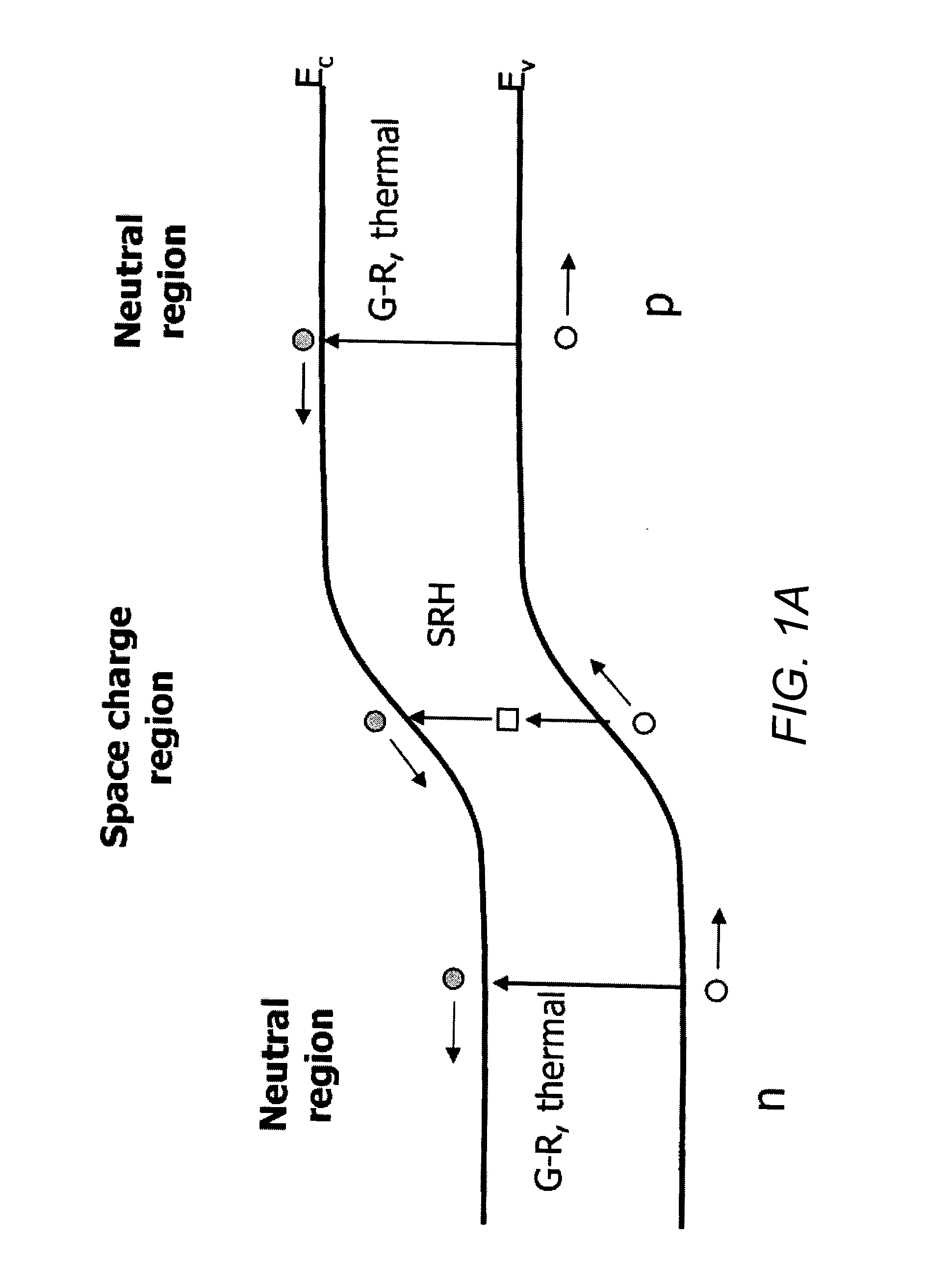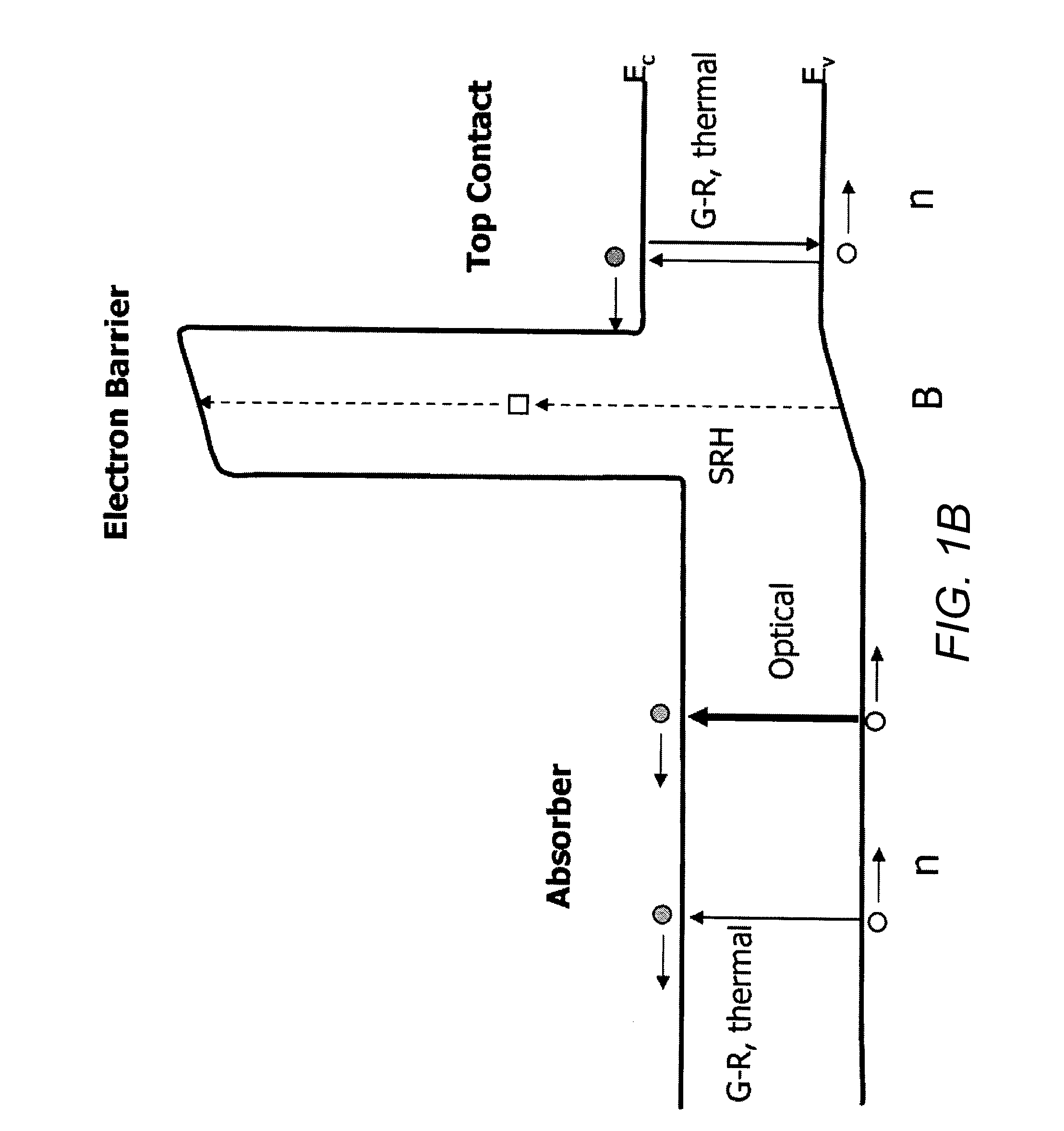Digital alloy absorber for photodetectors
- Summary
- Abstract
- Description
- Claims
- Application Information
AI Technical Summary
Benefits of technology
Problems solved by technology
Method used
Image
Examples
Embodiment Construction
1. Overview
[0036]As previously mentioned, embodiments of the present invention are directed to a novel digital alloy absorber layer for semiconductor photodetectors which can increase the spectral response range and improve the mobility of the photo-generated carriers (e.g. in an nBn photodetector or a p-n photodetector). A digital alloy absorber embodiment of the invention can employ one (or fraction thereof) to several monolayers of a semiconductor (insert layers) periodically embedded into a different host semiconductor material of the absorber layer. The semiconductor material of the insert layer(s) and the host semiconductor material may have lattice constants that are substantially mismatched. The described technique simultaneously allows for control of alloy composition and net strain, which are both key parameters for the photodetector operation.
[0037]In an nBn photodetector, the absorber is doped n-type, and therefore its photocarrier extraction property depends largely on ...
PUM
 Login to View More
Login to View More Abstract
Description
Claims
Application Information
 Login to View More
Login to View More - R&D
- Intellectual Property
- Life Sciences
- Materials
- Tech Scout
- Unparalleled Data Quality
- Higher Quality Content
- 60% Fewer Hallucinations
Browse by: Latest US Patents, China's latest patents, Technical Efficacy Thesaurus, Application Domain, Technology Topic, Popular Technical Reports.
© 2025 PatSnap. All rights reserved.Legal|Privacy policy|Modern Slavery Act Transparency Statement|Sitemap|About US| Contact US: help@patsnap.com



